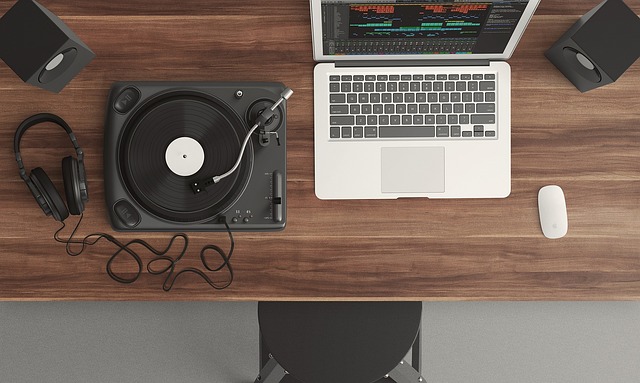
In today’s increasingly digital world, working from home has become the norm for many professionals. With this shift, having a well-optimized home office setup is more important than ever. A functional and comfortable workspace can not only improve productivity but also contribute to overall well-being. Whether you’re working remotely full-time, balancing hybrid work, or simply need a dedicated space for personal projects, creating the right home office setup can make all the difference. This article will guide you through the essential components of an optimized home office, from ergonomics and lighting to organization and technology.
1. Ergonomics: The Foundation of Comfort
One of the most critical aspects of a home office is ensuring that your space supports your physical health. Ergonomics refers to the science of designing a workspace that minimizes discomfort and risk of injury. Poor ergonomics can lead to strain on the back, neck, and wrists, resulting in long-term health issues.
Choosing the Right Chair
The chair you use plays a significant role in maintaining a healthy posture. An ergonomic office chair should provide proper lumbar support, allowing the natural curve of your spine to be maintained. The seat height should be adjustable, ensuring your feet rest flat on the floor or a footrest, with your knees at a 90-degree angle. The armrests should be at a height that allows your shoulders to relax while typing.
Desk Height and Position
The height of your desk is another critical factor. Ideally, your desk should allow you to keep your elbows at a 90-degree angle when typing, with your forearms parallel to the floor. If your desk is too high, you may need to use an adjustable keyboard tray. The monitor should be placed at eye level, about 20-30 inches away from your face. This setup helps reduce eye strain and neck tension.
Keyboard and Mouse Positioning
Position your keyboard and mouse at a comfortable distance to avoid overreaching or straining your wrists. A wrist rest can also help maintain the correct hand positioning. Many ergonomic experts recommend using a split keyboard, which allows for a more natural hand position, reducing stress on the wrists and forearms.
2. Lighting: The Key to Reducing Eye Strain
Good lighting is crucial for preventing eye fatigue and maintaining focus during long work sessions. Poor lighting can cause headaches, reduce productivity, and increase the likelihood of eye strain. Here’s how to optimize your lighting for a more comfortable work environment.
Natural Light
Natural light is the best source of illumination for your workspace. Try to position your desk near a window to take advantage of sunlight, which helps regulate mood and energy levels. Avoid placing your monitor directly in front of or behind a window to minimize glare.
Task Lighting
In addition to natural light, use task lighting to illuminate your desk. A desk lamp with adjustable brightness and direction can help reduce shadows and eye strain. Choose a lamp with a flexible arm, allowing you to position it for optimal lighting without creating glare on your screen.
Ambient Lighting
General ambient lighting helps reduce contrast between your monitor and the surrounding area, which can also contribute to eye strain. Use ceiling lights or floor lamps to create a balanced lighting environment. Soft, indirect lighting is preferable, as it provides a more comfortable and calming atmosphere.
3. Organization: Decluttering for Focus
A cluttered workspace can negatively impact your ability to concentrate and be productive. By keeping your home office organized, you can create a more pleasant and efficient work environment. Here are some tips for managing your workspace effectively.
Minimalism is Key
One of the best ways to keep your home office organized is by adopting a minimalist approach. Only keep essential items on your desk, such as your computer, notepad, and a few writing tools. Avoid letting papers, cords, and other non-essential items pile up.
Storage Solutions
Invest in proper storage solutions to keep everything in its place. Shelving units, filing cabinets, and desk organizers can help manage paperwork, office supplies, and technology accessories. Consider using cable management solutions to prevent cords from tangling and creating visual clutter.
Digital Organization
Don’t forget about digital organization. Keeping your files and digital workspace organized is just as important as your physical space. Create a system for organizing files on your computer, use cloud storage for easy access, and regularly clean up your desktop.
4. Technology: Tools for Efficiency
Your home office setup isn’t complete without the right technology to support your work. Ensuring you have the best tools and equipment can enhance your productivity and make your day-to-day tasks more manageable.
Computer and Monitor
If you spend a significant amount of time working on your computer, investing in a high-quality monitor is essential. A larger screen or dual-monitor setup can increase your productivity by allowing you to multitask more efficiently. Ensure your monitor has adjustable settings for brightness, contrast, and resolution to reduce eye strain.
Internet Connection
A reliable and fast internet connection is non-negotiable for remote work. If your home Wi-Fi is slow or unreliable, consider upgrading your internet plan or investing in a Wi-Fi extender. If your work involves frequent video calls, a high-speed internet connection will ensure smooth communication.
Noise-Canceling Headphones
If your home environment is noisy or you need to concentrate on calls, noise-canceling headphones are a valuable investment. They can block out distractions, allowing you to focus on your work and maintain productivity.
Backup Power Solutions
Consider a backup power solution, such as an uninterruptible power supply (UPS), to protect your devices from power outages. A UPS ensures that you won’t lose any work in progress during unexpected power cuts and gives you time to save your files before safely shutting down your computer.
5. Personalization: Making the Space Yours
While functionality and productivity are important, personalizing your home office can create a more enjoyable and inspiring atmosphere. Adding personal touches to your workspace can boost your mood and help you feel more connected to your environment.
Artwork and Décor
Incorporating artwork, plants, or personal mementos into your workspace can make it feel more welcoming. Plants, in particular, can improve air quality and create a calming effect. Choose décor that reflects your personality, but be mindful not to overcrowd the space.
Customizing Your Layout
Feel free to experiment with different layouts to find what works best for you. Some people prefer standing desks or convertible desk setups that allow for both sitting and standing throughout the day. Others may want to create separate zones within their home office for different tasks, such as a space for creative brainstorming and another for focused work.
Sensory Elements
Consider the sensory elements of your workspace. Using essential oil diffusers, scented candles, or background music can help set the tone for a productive workday. Aromatherapy, such as lavender or eucalyptus, can promote relaxation and focus.
6. Maintaining a Work-Life Balance
One of the challenges of working from home is maintaining a healthy work-life balance. When your office is just a few steps away, it can be tempting to work late into the night or check emails during personal time. However, setting boundaries is essential for your mental health and overall well-being.
Establishing a Routine
Having a consistent work schedule can help you stay organized and ensure you have time for both work and personal activities. Set specific work hours and stick to them as much as possible. Take regular breaks to recharge, and avoid overworking yourself.
Separating Work and Home Spaces
If possible, designate a specific area of your home for work, separate from your living space. This separation helps create a mental distinction between work and relaxation. If you don’t have a separate room for an office, try using a partition or different furniture arrangements to differentiate between work and personal areas.




